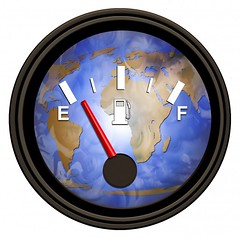
An article in Science last week caught everyone's attention. The title says it all: Use of U.S. Croplands for Biofuels Increases Greenhouse Gases Through Emissions from Land Use Change. In a world where many governments are mandating a shift to ethanol, this sounds like trouble. It's trouble on top of trouble, since we're hearing more about how growing corn, soybeans, and sugar cane to convert to ethanol is raising food prices.
The Science article spawned mainstream media interpretations with eye-catching headlines. The Los Angeles Times hollered: Biofuel crops increase carbon emissions. The New York Times warned: Biofuels Deemed a Greenhouse Threat. Bloggers and environmental sites picked up the excitement and soon lively discussion threads were debating whether switchgrass, algae, and cropland waste posed the same challenge, and whether co-generation plants could produce the ethanol cleanly when compared to the plants springing up in Iowa that are burning coal to generate ethanol from corn.
Many of the discussions, both in the mainstream media (once clear of the headlines) and blog posts, were knowledgeable and intriguing, posing solutions that only occasionally get a public airing. I was fascinating by descriptions of techniques for modifying your car to run on denatured alcohol and inventive ways you could then distill your own fuel in the backyard. And, if you're worried about destroying croplands, why not make biodiesel from algae using smokestack emissions.
A couple of hours sorting through the voluminous articles, posts, arguments, and counter-arguments left me a bit dazed. What was fairly clear is that we have many possible solutions to our energy needs. Some of them have been viable for 100 years or more (such as alcohol-powered vehicles). But, in spite of a wealth of workable solutions, governments around the world and large corporations hoping to hedge their bets on energy futures are pushing large-scale, often destructive projects. Whether clearing rainforests to grow more sugar cane for ethanol or diverting corn from being a food source to being a fuel, the impacts of these processes are abundantly evident.
And a solution that is immediately at hand, and doesn't require toppling a single tree, is improving energy efficiency. A longtime champion of fuel savings as an unheralded solution to many of our energy needs, Amory Lovins, co-founder of the Rocky Mountain Institute, sees profitability and smaller carbon footprints in using less fuel. A recent Newsweek article by Lovins, How to Fuel the Country While Saving the World, highlights a realistic path to conversing energy rather than squandering it.
Individual choices as well can make a huge difference as people adopt energy-efficient, low-impact lifestyles. We need to face that fact that change may not come from our prevaricating, slow-to-react national leaders, but local activism and lifestyle changes can induce energy savings from the community grassroots level. And on the individual level, especially when it comes to transportation, much can be done. Take a vacation by train this year instead of flying. Car pool to work. Get a bicycle or walk when running errands around town. Cut your weekly shopping trips to one instead of three. Think about getting an electric car--they're available if you do some hunting and more will be available in the near future. Talk your boss into letting you telecommute one or two days a week. Even simple steps like this can cut down your energy use for personal transportation 20 to 40 percent.
Personally, I'm going to look into converting my old SAAB 900 to run on alcohol and see what kind of vegetable matter already growing around my modest one acre lot might be fodder for the distiller. And, an alcohol-powered motorcycle might be fun...